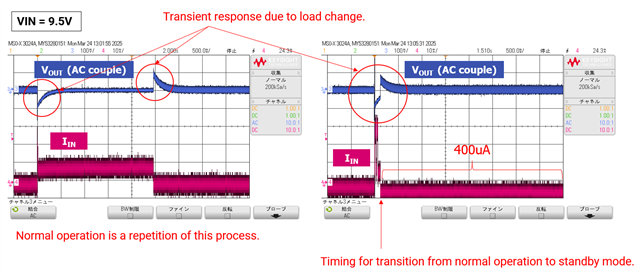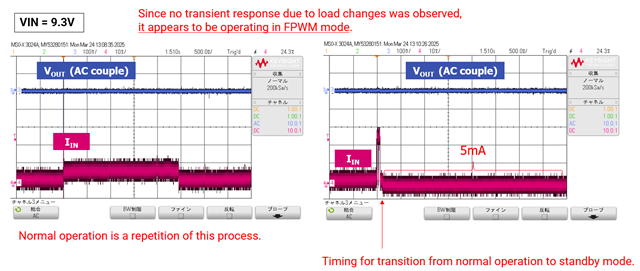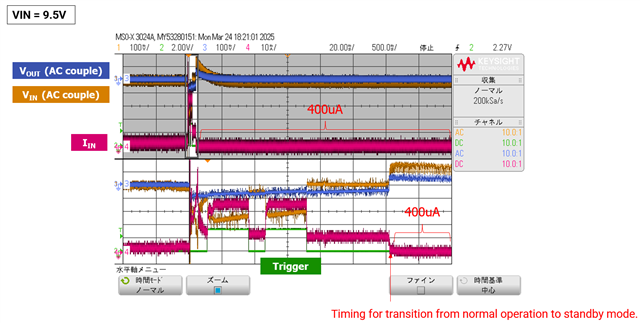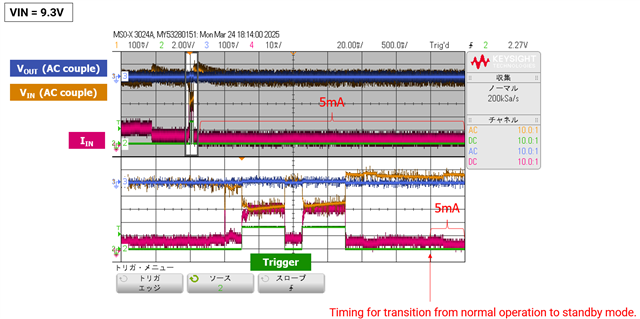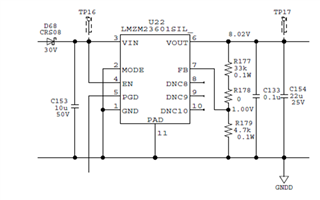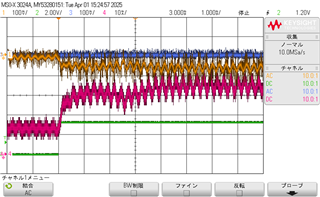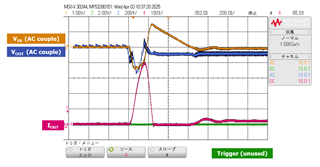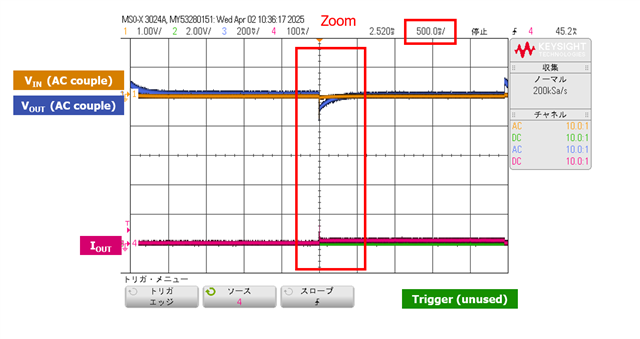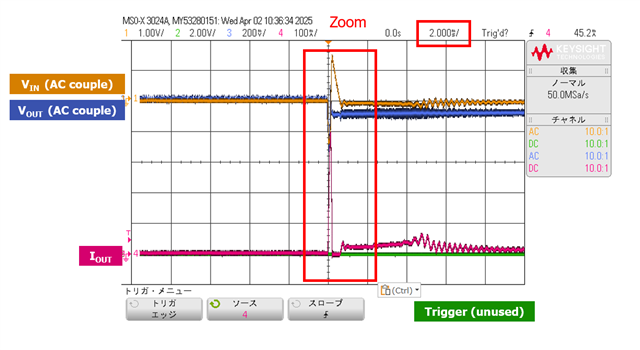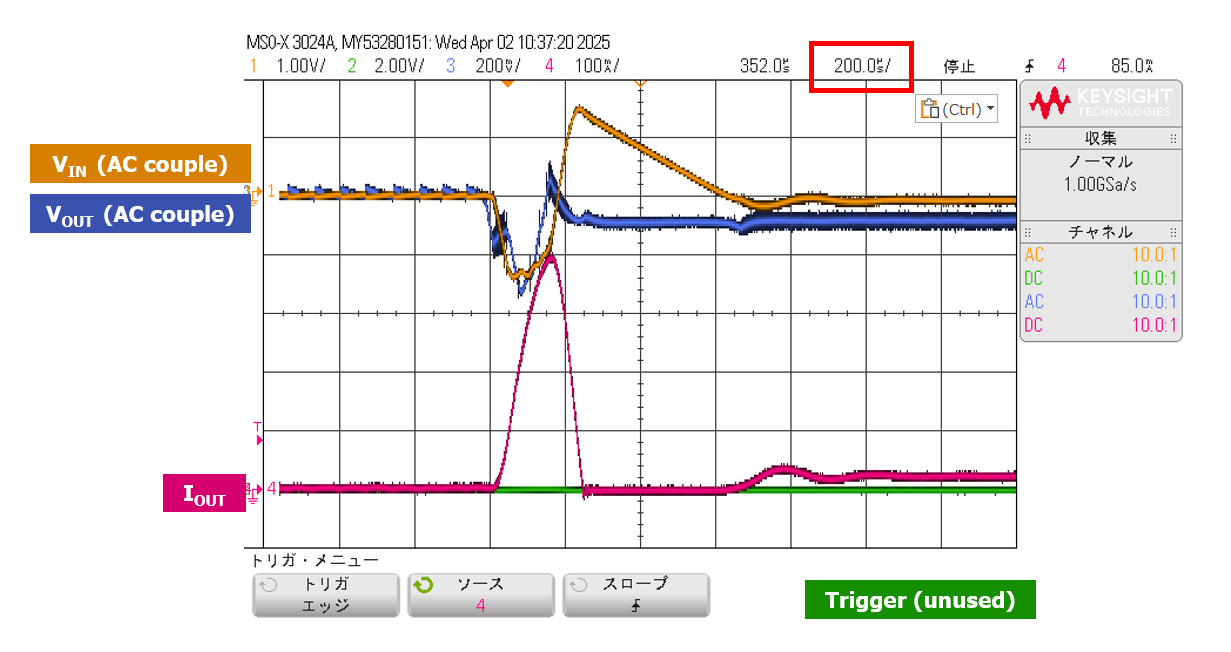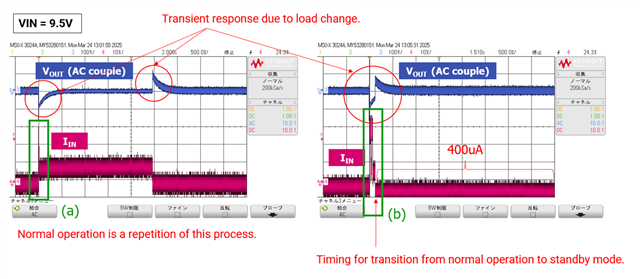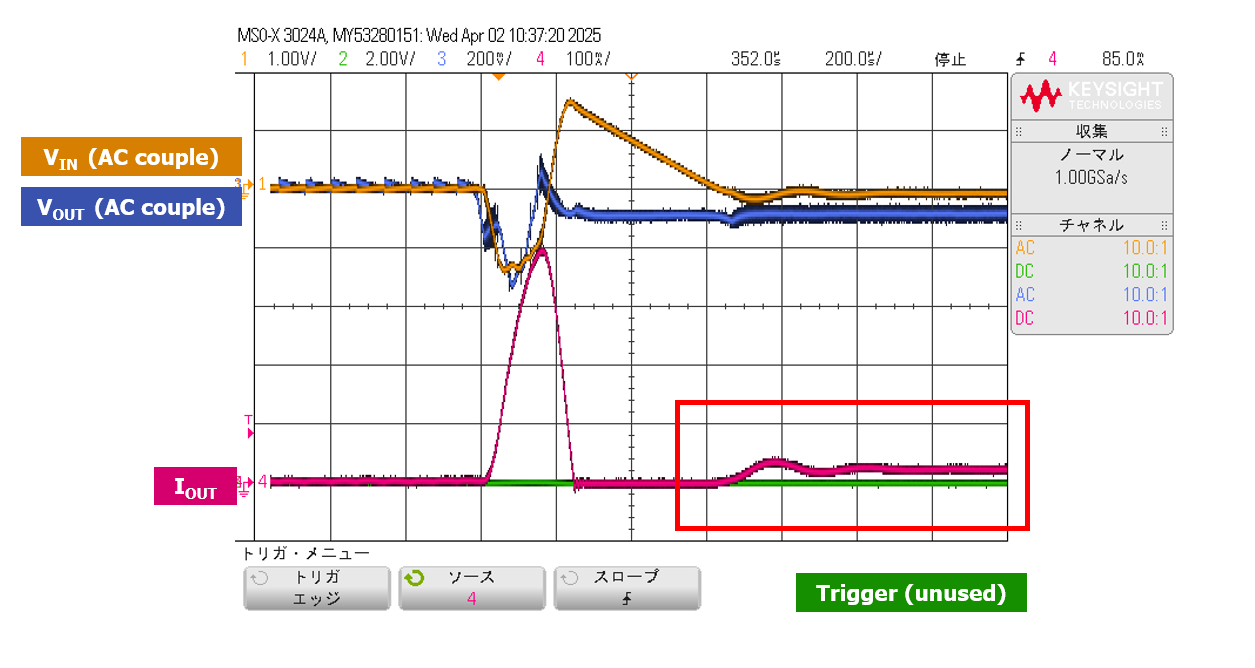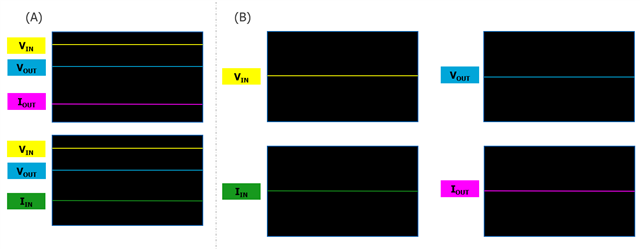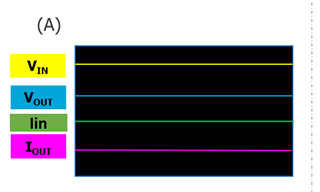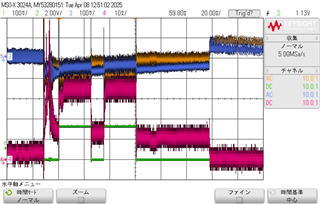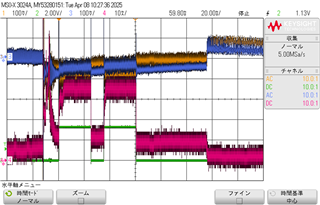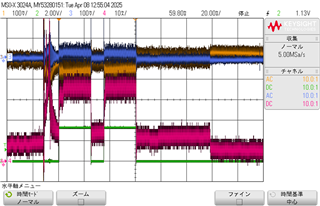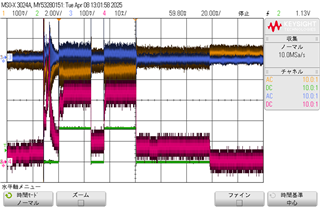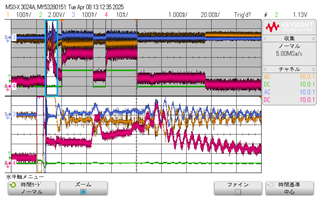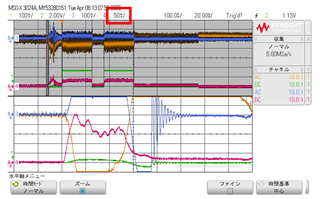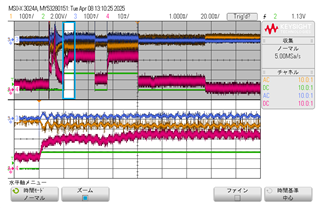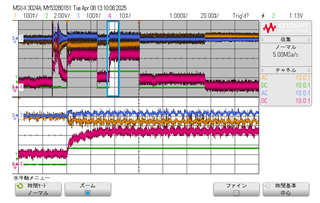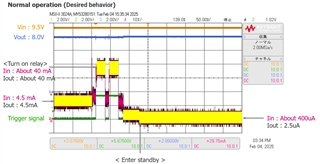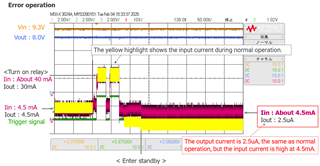Other Parts Discussed in Thread: TPSM33625
Tool/software:
Dear Sirs and Madams,
We are currently verifying the operation of LMZM23601.
VOUT:8V
IOUT:2.5uA
Currently, for all products, when VIN is 9.6V, the input current is approximately 400uA.
However, we found that when VIN was 9.5V, there were some products with an input current of approximately 400uA and other products with an input current of 4.5mA to 5mA.
When I checked the maximum duty cycle on the data sheet, it was 91% (typ), but what is the expected minimum value?

When observing the output voltage, we can see that there is a difference in the switching period.
[ VIN = 9.5V to 9.6V, IIN = 400uA ]
The switching frequency is about 1kHz (1ms).

[ VIN = 9.5V, IIN = 4.5mA to 5mA ]
The switching frequency is about 66kHz? (15us?).

The load current is 2.5uA for both of the waveforms above.
In the waveform below, I suspect that the cause of the increase in input current (IIN) is that the high-side FET is not completely saturated right?
Please could you provide us your opinion on the cause of this issue.
Regards,
Masashi



